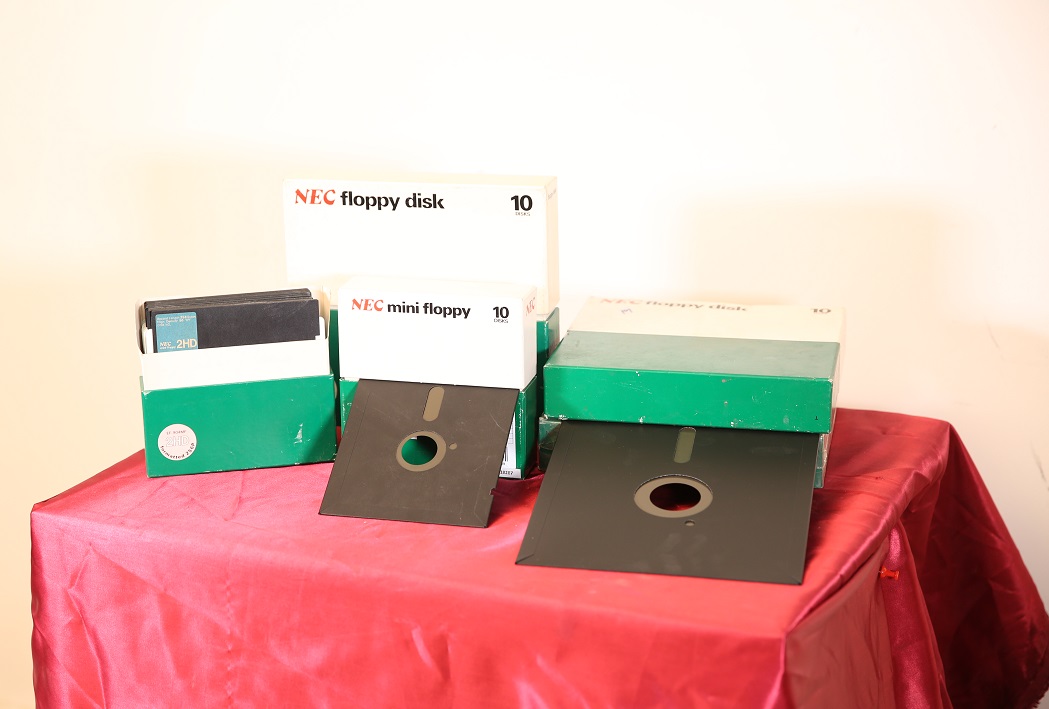- Model: Mini Floppy Disk 2DD (Double Density)
- Model Number: EF-903MF
- Manufacturer: Nippon Electric Company (NEC)
- Storage Capacity: 360KB – 1.2 MB
- Released in: Japan in 1985
Specification
- Size: 5¼-inch (133 mm)
- Density: DSDD (Double-Sided Double Density)
- Disk coating: Iron Oxide
- Data Encoding type: FM (Frequency Modulation)
- Data Read/Write Direction: Longitudinal / Horizontal
- Released for: NEC PC-9801 VM personal computer
Description
Floppy disk is a disk storage medium composed of a disk of thin and flexible magnetic storage medium encased in a rectangular plastic carrier. It is read and written using a floppy disk drive (FDD). Floppy disks were an almost universal data format from the 1970s into the 1990s, used for primary data storage as well as for backup and data transfers between computers. The floppy disks, invented and made by different companies, had disks diameter of 8 inches (203 mm), 5 1⁄4-inch (133 mm) and 3 1⁄2 inch (90 mm). When the 5.25-inch mini floppy disk was introduced in 1976, all drives were single-sided. Double-sided drives were introduced in 1978. In 1985, NEC introduced 5¼-inch double density floppy disk having a double sided formatted capacity between 360KB to 1.2 MB. It was released for NEC PC-9801 VM personal computer that has two NEC mini (5¼-inch 2DD) floppy drives. Double density (DD) 5¼-inch disks use an iron oxide coating. The first common encoding system for recording digital data on magnetic media was Frequency Modulation (FM) and it was used on NEC mini floppy disks. The problem with FM is that it was very wasteful. By the end of the 1980s, 5 1⁄4-inch disks had been superseded by 3 1⁄2-inch disks. During this time, PCs frequently came equipped with drives of both sizes. By the mid-1990s, 5 1⁄4-inch drives had virtually disappeared, as the 3 1⁄2-inch disk became the predominant floppy disk.

